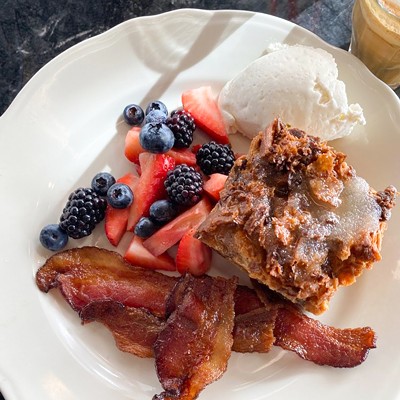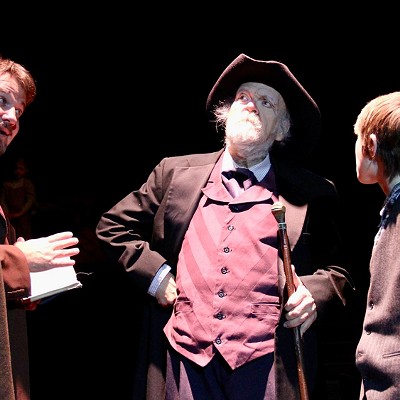The spotlight clicks on and glares down onto your face, immediately creating sweat beads along your hairline. Your music cues up, and your heart beats in your ears. You take one last breath before that final intro eight-count, and then you’re off.
Like you’ve practiced so many times before, your feet move solidly and confidently, and before you know it, the piece is over. You’re shaken back into reality by the roar of the audience and the curtain that falls to separate you from the adrenaline-filled stage.
Whether you’ve actually been there, or the “crowd” is your bedroom walls, being the star dancer on-stage is a quasi-elusive honor to behold.
Black swans
The dance community is known for rigorous devotion to its craft. Stigma surrounds the sport as one of intense pressure concerning body image.
Oftentimes, movies depict an onslaught of rail-thin dancers who count every calorie, then throw everything back up in the name of attaining the emaciated “perfect body” in order to nab the lead role of swan or princess or swan princess. In last year’s Oscar-winning “Black Swan,” Natalie Portman’s character was so stressed by her descent into characterization that she began to hallucinate growing feathers and caused herself unimaginable harm. But, dammit, she nailed the performance.
Who doles out this pressure? Is it instructors, one’s self or the art form as a whole?
“[Specific body type] comes with the territory. You wouldn’t become an opera singer if you couldn’t sing. It’s just like any other job,” said Kay Sandel, a dance teacher for the last 38 years and artist-in-residence in ballet and dance pedagogy at Oklahoma City University.
Sandel broke down the “physical facility guidelines” for a typical professional dancer. Ideally, well-proportioned builds are more acceptable. Long neck and arms are more aesthetically pleasing onstage, as are smallish heads.
Patricia Oplotnik, a dancer of more than 40 years and OCU artist-in-residence in tap and tap pedagogy, said part of it is due to health.
“Every 10 to 15 pounds of body weight puts 40 pounds of pressure on bones,” she said.
Loose feet?
While Sandel teaches dance, she is first and foremost a dancer. For her, the pressure to be a certain size or weight hasn’t been strongly felt.
“It’s never been a serious issue,” she said. “I work out and eat healthfully. If you’re a dancer, you choose a specific lifestyle.”
Discussing dealing with the delicate issue of the body image within a dancing career, Sandel said everyone is straightforward, whether the dancer is over or under the weight that is expected. If the problem is ongoing or becomes serious, the dancer will be referred to a health professional to work out the root issue. If a dancer becomes too thin, most likely he or she lacks the strength needed for rigorous routines, and the matter of aesthetics pops up, as well.
Sandel and Oplotnik agreed on one thing: Dance is an important part of life and should be enjoyed by all, professional or not.
“There are more souls of dancers than bodies,” said Oplotnik.
Save the last dance
In
the last few years, a revolution has moved the ideals of a healthier
body image forward. Unrealistic pressures of specificity where body
shape is concerned are being forced back into the cave from which they
crawled. Society, spearheaded by those who fight for equality, wants the
freedom to celebrate all body types and forms of beauty.
That being said, professional dancing is image-based and, therefore, promotes stress where body maintenance is concerned.
With the movement in celebrating uniqueness, that includes those bodies suited for dancing, as well as those that are not.
“All students who take dance can improve and enjoy the art form,” said Sandel.
You
just might not be the prima ballerina in any future stage productions,
but you can tap your way into any role you please. Although some art
forms and cultures may still place stipulations on size or shape, no
one’s forcing you to do the same.
Bring it on
Whether
you’re a delicate rose or more of bouquet, OKC offers alternatives for
anyone looking to pursue a healthy lifestyle by way of dance. And don’t
worry, they won’t weigh you in or measure you before class.
›
Oklahoma City Ballet School, 7421 N. Classen, 843-9899: Take serious
classes here, even if you don’t ever plan to pirouette that ballet
pointe on stage. Adult classes, for all skill levels, start at $10 a
session.
›
Classical Ballet School, 12008 N. Virginia, 755-5540. You’ll find
professionally trained instructors who accept students of all skill
levels. The school also offers a jazz class.
›
Teaze Dance and Fitness (pictured), 1112 N. Broadway, 232-7653: Want to stay fit
minus the tutu? Get acrobatic here, from pole dancing to Zumba. No
prereqs required. Keep in mind, as you work your way up (the pole),
you’ll find tighter-fitting clothes necessary.
›
Aalim Bellydance Academy, 2520 N. Meridian, 844-0304: Keen to stay on
the ground? No problem! Put on a shimmy belt and work on that core with
some traditional belly dancing. If you want to get serious about it,
this academy is the place to do it. Last year, the troupe won second
place at a competition in Las Vegas.
›
Barre3, 5800 N. Classen Blvd., 463-3343: Looking for a balanced
approach? Barre3 is a healthy blend of yoga, ballet and Pilates.
Instructors in the class will offer modifications if it’s your first
class or if you’re getting back into shape.











